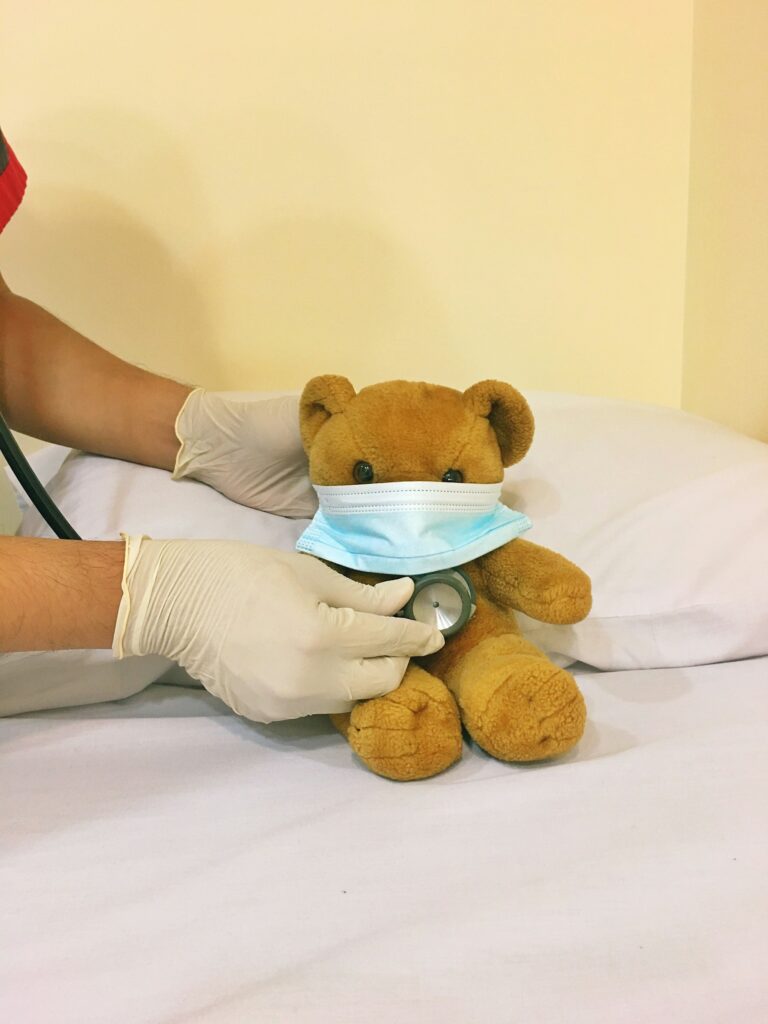Every parent feels a tug in the heart at the thought of their child being harmed or excluded at school. With the rise in school bullying, worry goes beyond mere academic results; it touches the deepest layers of your child’s emotional and social world. Imagine a child dreading the classroom not because of exams, but for the fear of ridicule, isolation, or even violence. The shadows cast by school bullying can shape confidence, disrupt friendships, and leave marks that are invisible but real—anxiety, withdrawal, even physical complaints like persistent headaches or stomach aches without a clear medical reason. What drives such behaviour among peers? Why do some children become targets or aggressors? How can you, as a parent, detect the signals early and intervene with compassion and effectiveness? Let’s explore the science, the warning signs, and the practical steps that put power into your hands—while always keeping the well-being of your child at the centre.
Understanding school bullying: definitions and forms
School bullying goes far beyond playground squabbles. It unfolds as a deliberate pattern, with a power imbalance at its core. Children or adolescents may use strength (physical, emotional, or social), popularity, or even technology to dominate others. Unlike one-off quarrels, bullying is repeated, targeted, and meant to cause distress. What does that look like in reality? The types vary widely:
- Physical bullying: hitting, kicking, damaging belongings, or physical intimidation. Unexplained bruises, reluctance to talk about what happened, or guarding personal items can make you pause and question.
- Verbal bullying: taunts, insults, derogatory remarks, or mocking. Perhaps your usually chirpy child turns silent, afraid of speaking up, or starts to display signs of social withdrawal.
- Social (relational) bullying: excluding, spreading rumours, intentional humiliation. Noticeable changes in friendship patterns, or avoidance of group activities, may signal something is amiss.
- Cyberbullying: misuse of technology—messages, social media posts, doctored photos. Secrecy with gadgets, sudden tears after screen time, or a drop in online activity can be warning bells.
- Sexual and identity-based bullying: comments or behaviour aimed at gender, orientation, race, or disability. These episodes often inflict deep emotional wounds—watch for mood swings and increasing isolation.
The absence of physical symptoms does not mean absence of distress; the power of emotional manipulation can be equally damaging. As a parent, a keen eye on shifts in sleep, appetite, or enthusiasm for routine activities matters. Is your child frequently “falling ill” on school days or showing a marked dip in academic scores? Sometimes, what appears “normal” has an underlying story.
Patterns and prevalence: who is at risk?
School bullying is neither rare nor limited to a particular setting. It can start early in primary school and continue into adolescence, morphing with age. Younger children typically face more physical forms, while older students encounter psychological and cyber actions. Surprisingly, both boys and girls are impacted, though the “how” may change—boys facing more overt aggression, girls more often targeted through social exclusion or sexual remarks.
Why does school bullying occur? Several intertwined threads:
- Individual factors: Children perceived as “different” (by physical appearance, disability, newness to the school), or those who struggle with anxiety or low self-worth, may be more vulnerable. On the flip side, those who display impulsiveness, difficulties with empathy, or emotional regulation might become aggressors.
- Family environment: Inconsistent boundaries, limited parental involvement, frequent conflicts, or exposure to aggressive patterns at home raise the risk—not just for becoming a victim, but also an instigator.
- School climate: When adults do not respond promptly, or when boundaries are poorly enforced, aggressive behaviours are more likely to flourish. Peer dynamics matter immensely; a group that remains silent or encourages aggression unknowingly supports the cycle.
Did you notice how group behaviour can either amplify cruelty or act as a buffer? Programs that involve the entire class—rather than focus only on the “bully” and “victim”—prove more effective in breaking the cycle.
Warning signs: what should concern parents?
Most children don’t come home and say, “I am being bullied.” Many fear retaliation, or simply don’t want to add to their parents’ worries. That’s why school bullying often hides behind a mask—frequent, unexplained aches, sudden changes in mood, irritability, or becoming quiet and withdrawn. Here are warning signs that deserve attention:
- Physical symptoms: headaches, stomach pain, unexplained injuries, sleep disturbances, even changes in eating patterns.
- Behavioural changes: reluctance to attend school, rapidly dropping grades, loss of interest in hobbies, or deteriorating friendships.
- Emotional shifts: anxiety, sadness, hopelessness, sudden temper tantrums.
- Increased secrecy with digital devices, or visible distress after online interactions.
- For those displaying aggression: becoming more secretive, blaming others, or difficulty forming genuine connections.
If any of these sound familiar, even in brief episodes, it’s worth pausing—starting a gentle, non-judgemental conversation can open the doors for your child to share. Remember, children affected by school bullying (either victims or aggressors) may not always fit a stereotypical profile.
Medical and psychological consequences: more than momentary pain
Science draws a sobering picture. The effects of school bullying are not just fleeting childhood worries—they ripple inward and often outlast the schooling years. The most commonly reported issues include:
- Somatic complaints: persistent headaches, abdominal pain, and sleep issues, sometimes leading to unnecessary and repeated doctor visits.
- Mental health: risk of clinical depression, social phobias, anxiety disorders, even post-traumatic stress especially when bullying is severe or prolonged. Suicidal thoughts, sadly, are not uncommon.
- Behavioural risks: substance use, self-harm, truancy, and reckless behaviours become more likely.
- Academic impact: discomfort at school, desire to quit early, and reduced performance are repeatedly seen in victims—and yes, sometimes in perpetrators too.
- Social isolation: strained friendships, difficulty trusting peers, and diminished feeling of school “belonging.”
For children with disabilities or neurodevelopmental differences (such as ADHD or autism spectrum), research shows they are at higher risk—a reality compounded by challenges in expressing emotions or defending themselves. The right support, early on, is essential; professional involvement can prevent long-term complications.
Legal framework, policies, and reporting: what are your rights?
Anti-bullying policies are not just paperwork—they offer real protections, including for race, gender, and disability. Schools must investigate complaints, document episodes, respond promptly, and ensure ongoing safety. Parents sometimes hesitate to report, fearing backlash or inadequate response, but the law is clear: every child deserves a safe educational environment. If school bullying is suspected:
- Document facts (dates, places, details, who was involved).
- Write to school authorities—keep communication in writing.
- Follow up systematically; escalate concerns where responses are slow, and seek local education officials’ or legal input when required.
- Remember, reporting barriers should never be a deterrent—every school has a duty to support you throughout.
Prevention and actionable strategies
A one-size-fits-all approach rarely works. The prevention of school bullying thrives on a multi-layered, collaborative effort:
- Positive school climate: Explicit behavioural standards, consistent adult presence in corridors and playgrounds, and respect as a daily value.
- Educating staff and students: Regular training to recognise subtle forms of bullying, intervene promptly, and nurture bystander action (encouraging witnesses to act safely and compassionately).
- Parental involvement: Frequent communication with teachers and other parents, encouraging children to share concerns. At home, demonstrating open-minded listening, modelling empathy, and exploring practical strategies for conflict resolution all matter.
- Digital literacy: With cyberbullying on the rise, teaching safe online behaviour, monitoring screen time, and openly discussing digital risks are essentials.
- Whole-class and peer-led programs: Marked improvement is seen when students themselves become advocates for change—standing up for others, including those who seem different, praising acts of kindness, and refusing to participate in negativity.
Above all, the adults—parents, teachers, caregivers—set the tone.
Supporting children affected by school bullying
The healing journey—whether from ongoing bullying or its aftermath—benefits from steady, non-judgemental support:
- Listen, truly listen. Let your child know you believe and accept their experience.
- Affirm their feelings and remind them: bullying is never their fault.
- Seek professional help—counsellors or therapists with expertise in trauma or child mental health can offer effective strategies.
- Build up resilience: help your child reconnect with positive activities, friendships, and experiences that remind them of joy and capability.
- Partner actively with teachers and the school to restore safety.
- In case of physical harm or worsening distress, prompt medical attention is essential.
- Consider legal support when necessary for continued protection of rights and safety.
Open, genuine communication transforms not just recovery, but the entire family dynamic.
Key takeaways
- School bullying is widespread, but vigilance and early action can prevent long-term scars.
- The impact of school bullying reaches well beyond academics, shaping emotional and social development.
- Parents who keep the conversation open and trust their instincts strengthen their child’s safety net.
- Effective solutions almost always involve the whole community—teachers, parents, classmates, and even bystanders together.
- Digital awareness is necessary: cyberbullying is real and can occur at any time of day.
- Resources—counsellors, doctors, legal advisors, and school staff—are available to support families through every step.
- Download the application Heloa for personalised guidance and free health checklists, making support smoother for your child’s journey.
Questions Parents Ask
How can I help my child regain confidence after facing school bullying?
Encouragement is the first step—listen without interruption, remind your child that what happened is not because of who they are, and that their worth is much greater than what was said or done to them. Small achievements deserve celebration. Suggest spending time with supportive friends, or exploring new activities where they feel welcome. Consistent reassurance, patience, and when needed, professional counselling make a real difference in rebuilding lost confidence.
What if bullying happens outside school premises, like during transport or online?
Bullying does not respect boundaries—it finds its way after school hours, on the bus, in neighbourhoods, and through digital spaces. Stay approachable; ask open questions about your child’s day. Collect as much detail as you can—who, what, when. For offline events on public transport, reaching out to transport officials or local help lines can add another layer of safety. Gather evidence if online incidents occur (screenshots, logs) and use built-in platform reporting features. Collaboration between parents, teachers, transport staff, and digital safety teams enhances protective support.
My child witnessed someone being bullied at school. How do I encourage them to speak up?
Active bystanders have the power to change outcomes. Guide your child with scenarios—“What would you do if…”—and help them practice responses at home. Encourage them to comfort the bullied student, inform a trustworthy adult, or simply decline participation in mean behaviour. Remind your child: asking for help is an act of courage, not weakness. Safety is important—discuss ways to support without endangering themselves, and that every small act of kindness counts.
Is school bullying different for children with disabilities?
Research shows children with disabilities face a greater risk—not only of becoming targets, but in some cases, also displaying aggressive behaviours due to frustration or challenges in self-expression. Social isolation is often more pronounced. Special attention from adults—a blend of proactive supervision, open communication, and tailored peer support—makes all the difference for their inclusion and safety.
Can reporting school bullying really make an impact?
Absolutely. Reporting ensures situations are recorded, investigated, and that steps are initiated for safety and accountability. Sometimes parents worry about making matters worse—yet systematic documentation and formal notification empower both the child and the wider student body. Keep channels open with schools and never hesitate to seek next-level support when needed.
For every act of school bullying, there is a stronger, collective response waiting—one that begins at home, and finds its voice through informed, resilient families and communities.
Further reading:









